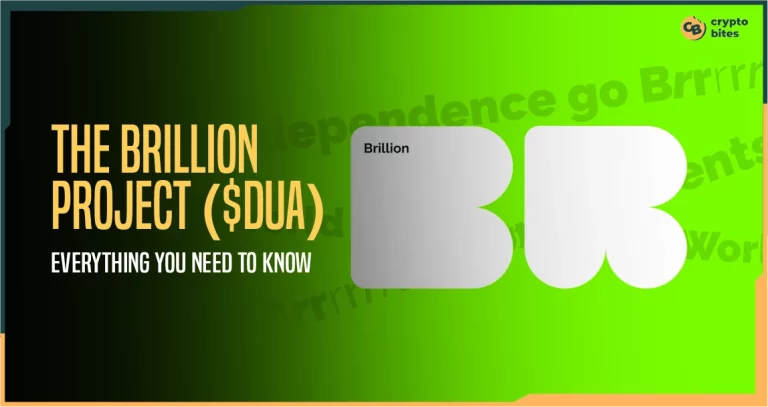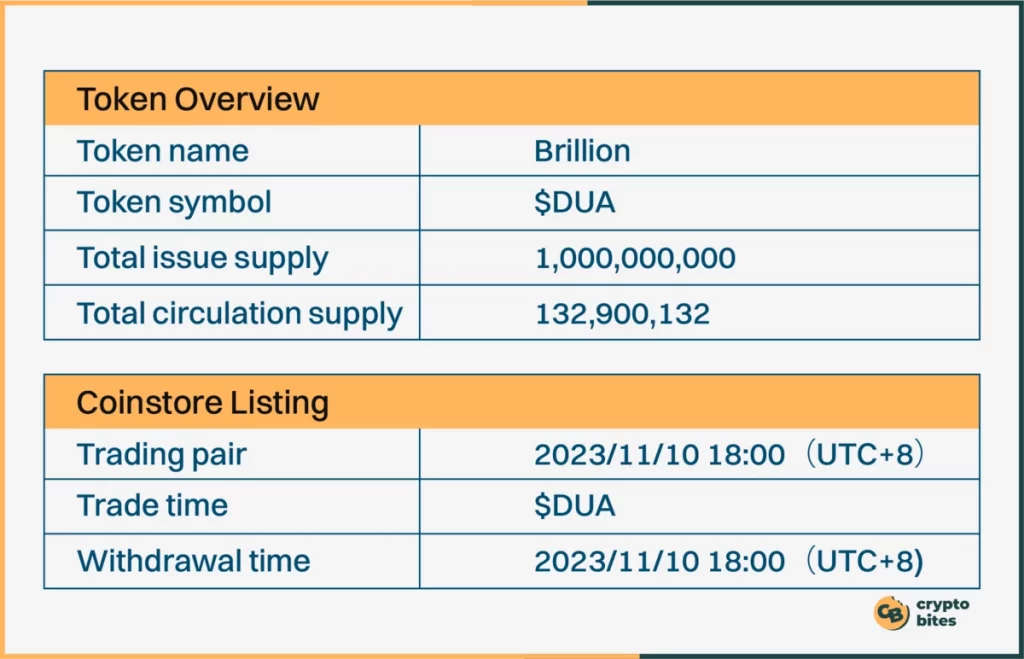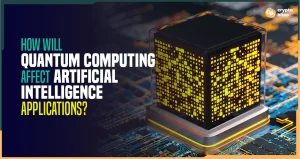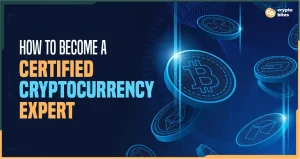
What Is Brillion Project ?- Everything You Need to Know
There are going to be a lot of people—billions, not just thousands or millions—who will start using Web3 in the upcoming years and even in the decades to come.
With these new users, a ton of new projects and transactions will also enter the market.
To make this next phase of adoption work well, there has to be a way to smoothly introduce these new users to Web3 and link everything together properly.
The current products available are limited to make this possible, and they cause problems in the entire market.
We cannot let centralized solutions strong arm the market, as they will most certainly take your data and privacy without asking.
It’s clear that none of the existing tools on their own can help bring billions of new users into Web3.
What we think is necessary is a big picture plan that makes this adoption process easier.
This plan needs to focus on making it easy for users, involving the entire system, and keeping things like self-control, personal identity, and privacy at the core of the technology itself.
That’s where Brillion comes into play.
Brillion, as the next step after Dua Pay, has a goal to create a complete gateway to Web3 that includes everyone.
This article will talk about Brillion’s new wallet system and the cool new things it does, especially in connecting $1 trillion worth of transactions and the Brillion tokenization of real-world assets.
Now, let’s dive in and learn more about it.
What Is Brillion Project ($DUA)?
The Brillion Wallet is made for handling digital stuff you own and who you are, all on your own, without needing someone else to take care of it, like Metamask or Rainbow do.
It helps you link up to loads of apps that don’t rely on one central place and gives you some really smart tools.
These tools let you do things like use your social accounts to log in and recover your stuff privately, keep track of important details about yourself, and set up some clever rules.
This wallet makes it easy to handle your digital things and do stuff with those apps without any hassle.
You can buy and sell unique digital items on places like OpenSea, trade different kinds of tokens on Uniswap, and keep your digital stuff safe.
One big deal about this wallet is that it helps you create and handle your very own identity, making it easy to use services that follow rules while also making sure your stuff stays safe from getting lost or stolen.
It works smoothly on all kinds of web browsers on computers, phones, and tablets. Oh, and there is a version for phones that guarantees that everyone can use all the apps that work with this wallet on a mobile device.
Brillion Token Overview & Coinstore Listing
Here is the token overview of the Brillion project:

Applications of the Brillion Wallet
The Brillion Wallet offers various features aimed at improving how users handle digital assets and identity within the crypto space.
It’s a versatile tool in decentralized finance and asset management, providing users with self-custody—complete control over their identity. Users enjoy absolute control over their digital assets, ensuring paramount security and privacy.
Positioned as an alternative to known wallets like Metamask and Rainbow, the Brillion Wallet matches and, in some cases, surpasses their functionalities.
Users can easily connect to most decentralized applications (dApps) and access specific dApps directly within the wallet, which is crucial for activities like trading, gaming, and engaging in decentralized finance.
Simplified access and recovery using social login and biometrics make it more user-friendly, particularly for newcomers to digital wallets.
Privately managing verifiable credentials and implementing smart rules, such as automated transactions or enhanced security protocols, adds sophistication and customization to the wallet’s operations.
The wallet supports various tasks, from buying and selling NFTs on OpenSea to trading tokens on Uniswap and securely storing digital assets like RWAs.
Enabling users to create and manage self-sovereign identities addresses the increasing importance of digital identity verification.
The wallet’s features focus on protecting against potential asset loss or hacking.
Compatibility across modern web and mobile browsers ensures easy access and management of assets across devices.
These utilities position the Brillion Wallet as a comprehensive tool for managing digital assets, appealing to both security-focused users and those seeking a user-friendly interface in the blockchain ecosystem.
Financial Services Provided by the Brillion Project
In-App Non-Custodial Wallet
Non-custodial wallets, pivotal components of the Web3 landscape, form the gateway to decentralized finance (DeFi) activities such as fund transfers, staking, yield farming, lending, and borrowing.
Traditional custodial wallets, exemplified by centralized exchanges, prioritize security but limit user flexibility.
Conversely, open-source wallets like Metamask, while offering extensive access, expose users to heightened security risks.
Aligned with the mission to onboard millions into the Dua ecosystem, they recognize that some users may be new to crypto.
Onboarding
The implementation of our in-app non-custodial wallet aims to empower users with full control over their private keys. This allows them to generate Web3 identities seamlessly within the application.
To cater to users of varying crypto expertise, the wallet creation process is optional and located in the settings section for user discretion.
Users can effortlessly create new wallets, import existing ones, or export them via a secret phrase.
After the initial version launches, existing users will receive notifications encouraging them to explore the in-app wallet creation option.
New users, upon signup, will be prompted to generate their crypto wallets within the application.
To establish their cryptographic identity, a fragment of their existing data is utilized. As an additional layer, the user selects and remembers a PIN without outside assistance.
This approach ensures that neither keys nor complete recovery data are stored in our backend, safeguarding user accounts even in the face of cyberattacks.
The user-provided secret phrase in the application’s frontend securely encrypts each of the multiple accounts that the in-app wallet supports.
Security
In the initial release of the wallet, users will need to memorize a mnemonic phrase, a sequence of words serving as their private key.
To enhance security, users will establish a PIN, crucial for accessing funds or authorizing transactions on the blockchain.
Given that users exclusively own their private keys, forgetting the PIN results in an inability to access their funds.
A future feature implementation includes a social recovery solution, allowing users to recover private keys in case of loss or emergency situations.
User Experience
Optimizing the user experience stands as a pivotal goal in acquainting 100 million users with DeFi and Web3 technologies.
The process of sending blockchain-based funds to others can often be complex and daunting.
Manually copying and pasting a lengthy 42-character blockchain address proves inefficient for fund transfers.
To simplify this, our aim is to facilitate transfers akin to sending a tweet, enabling users to transfer funds solely using a username.
On & Off Ramp Solutions
Users have the option to deposit funds into their wallets from another blockchain wallet that supports ERC-20 tokens or through on-ramp solutions, which convert regular FIAT currencies into cryptographic tokens.
Similarly, when withdrawing funds, users have the flexibility to either transfer them from the in-app wallet to other non-custodial wallets or utilize off-ramp solutions that convert tokens back into FIAT currencies.
Future updates to the wallet are anticipated to include the integration of third-party on- and off-ramp solutions for enhanced deposit and withdrawal functionalities.
DUA Wallet Integration
Embedding a DUA wallet into platforms extends crypto services to all users.
Initially, they’ll access basic functionalities like depositing and withdrawing funds, offering a smooth start with our wallet.
This step-by-step introduction helps users ease into utilizing our services.
Brillion’s strategy also involves introducing users progressively to various widely-used and beneficial decentralized finance (DeFi) protocols.
To achieve this, they’re setting up an internal framework to integrate different sets of smart contracts, each serving specific functions for users.
DUA Layer
Given the anticipation of a primarily beginner user base and the commitment to introducing them to crypto, the responsibility for ensuring a smooth onboarding process is paramount.
The team aims to prioritize reducing friction and ensuring positive user experiences, with a focus on preventing potential cyberattacks or fund losses, which can be detrimental to user confidence.
The DUA Layer serves a triple purpose:
1. Avoiding Cyber Threats and Scams
This feature aims to thwart cyber attackers and scammers, preventing the loss of funds through deceptive tactics. It acts as a safeguard against pitfalls commonly exploited by malicious entities.
2. Adding DeFi Utility for DUA Token
The DUA Layer introduces an additional utility for the DUA Token within the decentralized finance (DeFi) ecosystem, enhancing its functionality and relevance.
3. Reducing User Fees in DeFi Interactions
By incorporating the DUA Layer, the protocol aims to lower fees associated with user interactions in DeFi, ensuring a more cost-effective experience for users.
One significant risk of fund loss involves users unknowingly sharing their private keys or secret phrases due to social engineering or phishing tactics.
Another risk arises from interactions with malicious addresses or smart contracts that disguise their activities as legitimate but are actually harmful, such as through ERC-20 allowance provisions for malicious contracts.
To combat these risks, they plan to introduce a time-delay feature between a user’s request to view their private key and its display, accompanied by educational prompts highlighting common cyber threats during this delay.
Furthermore, a whitelist of contract addresses will restrict access to smart contracts not included in their approved user list, safeguarding against interactions with malicious contracts.
Recognizing varying levels of crypto knowledge among users, the interface will determine interaction permissions with smart contracts based on the user’s experience and education level within the app.
Additionally, measures will be implemented to curtail gas expenditure during congestion periods, suggesting optimal blockchain activity times to minimize fees for users.
A smart contract layer will make it easier for users to do multiple transactions at once when they are using loan-generating or yield-generating protocols. This will help people who want to use DeFi protocols together save money on gas costs.
This process involves holding a fraction of returns in DUA for added security, with redistributed percentages benefiting DUA stakers, fostering trust among token holders.
Encouragement for users to stake in governance pools will be extended, granting reduced fees and increased returns on their interactions within the ecosystem.
Swap Tokens
Users will have the capability to execute token swaps across various tokens.
Integrating support for swapping contracts from top DeFi decentralized exchanges will facilitate this.
The upcoming functionality will enable direct swaps within the app, harnessing the full range of native features offered by decentralized exchanges (DEXes).
This provides support for early users while also allowing them the flexibility to disable these options at their discretion.
Loans
Users who transact larger balances using their non-custodial wallet provide an opportunity to establish a crypto-loan protocol within the application.
These loans would rely on crypto assets held as collateral.
The platform aims to offer users avenues to initiate, monitor, and close these loans through a comprehensive and user-friendly interface.
Operational Plan of the Brillion Project
In their initial operational phase, the plan is to construct infrastructure enabling user interaction with KYC-free DeFi protocols.
Recognizing that some users might lack crypto expertise, they aim to provide heightened security and limit protocol engagements as a wallet advantage.
For instance, wallets like Metamask permit unrestricted interactions with numerous addresses and smart contracts, posing security risks.
While advocating for user freedom, they prioritize a gradual onboarding process to shield users from cyber-attacks, spam, and daily losses witnessed in the crypto space.
Consequently, the wallet’s initial functionality will involve interactions with a select few pre-approved contracts, with the team responsible for creating and deploying the governing logic and prioritizing user safety.
Final Verdict
The abovementioned features are nothing short of amazing, especially in the world of crypto. And if that doesn’t impress you, then you should know that Brillion is bringing iOS and Android app integration to their wallet to make the cash flow from your bank account to a crypto exchange just that much easier.
It is not easy to anticipate whether crypto will take off as a mainstream medium of transaction or not. But even if it doesn’t, the standalone features of Brillion’s Dua itself is good enough to make it a great alternative to any other crypto wallet.




